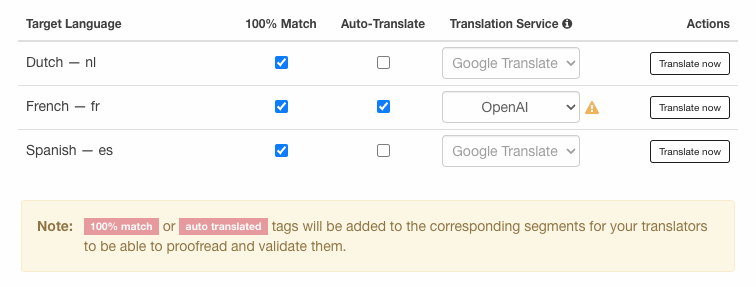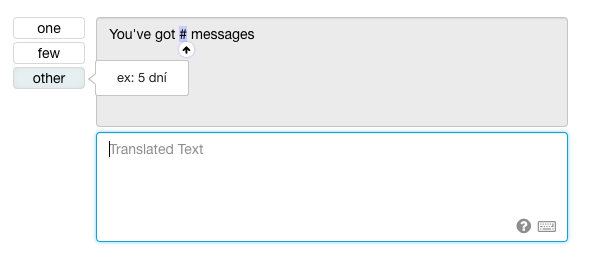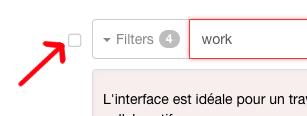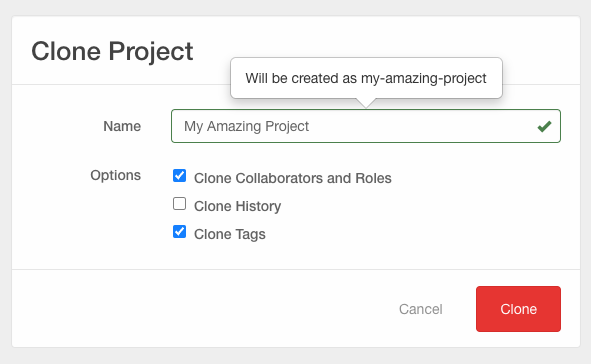4 min. read
OpenAI to Auto-Translate your Applications
Artificial intelligence, ChatGPT, natural language models, and more to come 🚀 The future of automatic translation is here!

We have integrated OpenAI as a new (experimental) machine translation option for our users to choose from, alongside DeepL and Google Translate.
This had been requested many times over the past months, especially due to ChatGPT’s media success, but we chose to carefully test it before making it available (it’s still experimental).
How to Enable OpenAI in Your Project
Log into your Translation.io account, then go to the settings of your project.
In the Auto-Translation section, check the “Auto-Translate” checkbox and select “OpenAI” as the translation service for the desired target language(s).

With the “Translate now” button, you can then automatically process all untranslated keys. Please note that it may take up to several minutes, depending on the size of your project (see Caveats below).
About the AI Model Used
We rely on the GPT-3.5-turbo model provided by OpenAI. Although OpenAI’s models are not designed specifically for translation, they are able to « understand and generate natural language », which is the essence of the translation process.
Caveats
This feature is still experimental, and using OpenAI comes with a few caveats.
-
Speed: as of April 2023, auto-translation with OpenAI is much slower than with DeepL and Google Translate. Auto-translating a very large project may take several minutes. On our side, we manage to process translations in batches and in parallel, to optimize speed for our users.
-
Languages supported: OpenAI’s GPT-3 models have been trained on huge volumes of source texts in various languages, but the quality of the translations generated may vary from one combination of languages (source & target) to the other. Sometimes, the service is simply unable to generate a translation from a language to another.
-
Punctuation: the model sometimes omits the final period at the end of a translated sentence, or may too closely follow the punctuation rules of the source language instead of those of the target language. Be sure to review the generated translations.
In any case, we strongly recommend working with human translators to review automatic translations, in order to ensure the best quality.
What’s Next?
We now have the internal tools to easily integrate other AI models to Translation.io, so as soon as another great model hits the market, we will be ready to bring it to you.
Any question? Feel free to write us.



